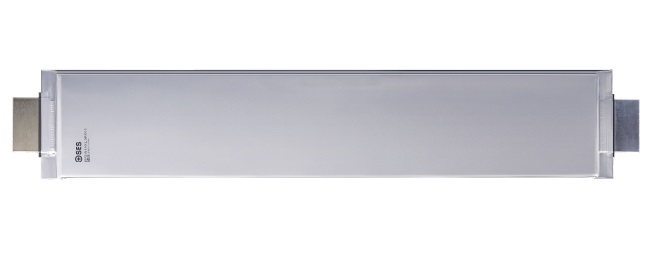From the perspective of the development of silicon anode technology, the focus of improving the energy density of power batteries has expanded from the cathode electrode to the anode electrode and other components.
Anode electrode material
In the context of this industry, lithium metal secondary batteries that use metallic lithium as a anode electrode material have also received more attention.
Compared with lithium-ion batteries, the cathode materials of hybrid lithium-metal batteries are almost the same.
As a anode electrode material, the theoretical capacity of lithium metal is 3860mAh/g, which is about 10 times that of graphite, it can be matched with the existing high-capacity anode electrode system.

Integrated Lithium Metal Battery
High-energy-density lithium metal batteries, with the advantages of their materials, can achieve an energy density of more than 40% higher than that of conventional lithium batteries, reaching more than 400Wh/kg.
Recently, SES, a supplier of hybrid lithium metal batteries, released the Apollo lithium metal battery with a capacity of up to 107Ah.
Largest single capacity
It is said to be the lithium metal battery with the largest single capacity in the world, and it is also the world’s first public display of a single lithium metal battery exceeding 100Ah.
SES is building a giga-factory is located in Jiading International Automobile City. After completion, it will have a production capacity of 1GWh, and will become the world’s largest lithium metal battery factory by then.
SES founder Hu said that the possible time for the industrialization of hybrid lithium metal batteries is estimated to be in 2025.
Not only density, but also safety
Compared with lithium-ion batteries, the hybrid lithium-metal battery technology can not only increase energy density, but also improve safety.
Compared with existing lithium-ion batteries, hybrid lithium metal batteries use a large-gram-capacity lithium metal anode electrode and a thinner solid electrolyte layer, which can greatly increase the energy density.
Mainstream battery companies also see room for future development of hybrid lithium metal batteries.
CATL has established a 21C laboratory for forward-looking technological research. It is currently advancing the layout of new technologies including metal lithium batteries, all-solid-state batteries, etc.
Progress & problems
Through systematic analysis of the principles of various key processes and related equipment, new metal lithium materials, new equipment development, parameter optimization and other strategies have been adopted to realize automatic die-cutting and semi-automatic lamination, the metal lithium secondary battery lamination time is only 1.7 minutes, and it has been verified in the development of lithium-sulfur batteries.
The subsequent development of die-cutting-lamination integrated equipment will realize fully automatic lamination. The chip technology provides reliable technical support for high specific energy lithium metal secondary batteries.
Although the storage capacity of lithium metal batteries is equivalent to 10 times that of lithium ion batteries, they are faced with the problem of “jamming” in commercialization, that is, when lithium metal batteries are charged and discharged, lithium will not uniformly accumulate on the electrodes. This accumulation greatly shortens the life of the power battery, and may cause a short circuit or even a fire.
Three main problems
- The first is that it is easy to grow lithium dendrites, which pierce the diaphragm but affect the safety of the big problem;
- The second is that the lithium negative electrode is prone to violent expansion in volume, which seriously affects the battery life. ;
- Third, the chemical properties of lithium are active and can be reacted in humid air and other environments. Therefore, production needs to be carried out under special conditions.
It is a long way to go
There are many technical problems that need to be improved. There is still a long way to realize commercial applications of lithium metal secondary batteries.
Recently, a new study published by Harvard University in the United States combined the two major directions of lithium metal and solid electrolytes and achieved new breakthroughs. The lithium metal solid-state battery developed by it shows a very stable state.
Under the setting of high energy density, it can still achieve more than 10,000 charge and discharge cycles, and the expected life span of electric vehicles can reach 10-15 years.
It can be fully charged after 10-20 minutes on fast charge mode.





